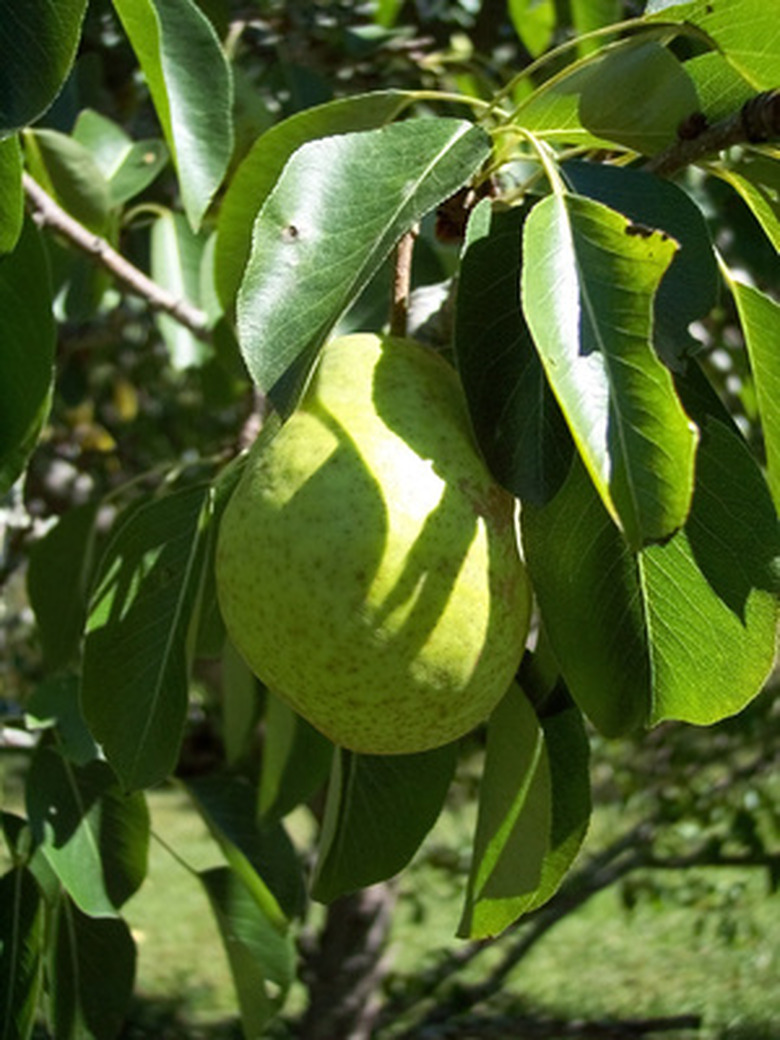Companion Planting For Pear Trees
Pear trees are a common fruit tree found in orchards and many gardens. Growing pear trees can be an enjoyable hobby. One of the biggest problems with planting pear trees is the potential for damage from pests and disease. Controlling pests is essential for having a good harvest. Using natural methods ensures less cost and comparable production to herbicides and other methods. One way to use natural methods is to use companion planting for pear trees. To do this an understanding of what companion planting is and how to accomplish it is required.
- Pear trees are a common fruit tree found in orchards and many gardens.
- One way to use natural methods is to use companion planting for pear trees.
Identification
Companion planting is a technique used to create a natural plant or tree resource for protection, nutrition or both. Companion planting takes two or more different species of plants and puts them together in a symbiotic environment.
Use
The use of companion planting for pear trees is twofold: the companion plants protect the pear tree from many forms of pests, and simultaneously attract beneficial insects; some companion plants also provide needed minerals for the pear tree.
Types
Flowering plants are used in companion planting as both a secondary defense for boring pests and as a soil modifier to the root system. Examples of flowering plants used in companion planting would be poached eggplant, goldenrod and morning glory. Bee balm and borage can also be used as companion planting for pear trees. Nasturtium is a vine used mainly for protection.
- Companion planting is a technique used to create a natural plant or tree resource for protection, nutrition or both.
- The use of companion planting for pear trees is twofold: the companion plants protect the pear tree from many forms of pests, and simultaneously attract beneficial insects; some companion plants also provide needed minerals for the pear tree.
Base Gardening
Legumes can be used to add nitrogen to the soil, according to the National Sustainable Agriculture Information Service. Legumes, such as clover, also act as ground cover to protect roots and trunk bases. Another companion planting method is to grow peanut plants, beans or peas around the base of the pear tree; plant seeds around the root area and allow the plant vines to grow up the trunk. As they fill in, the vines provide protective cover. Chamomile can be used to attract wasps and hoverflies, as well as release calcium, potassium and sulfur into the soil during dormant states; garlic will provide similar benefits at a faster rate.
Pear Tree Benefits
The benefits of companion planting for pear trees depends on the companion plant. Eggplant, goldenrod and morning glory attract ladybugs; the ladybugs in turn eat aphids, which suck the sap and nutrients from the leaves of the tree. Bee balm and borage bring bees and wasps to the tree, who in turn help with pollination; borage also adds minerals such as calcium and potassium to the soil. Nasturtium protects the tree from coddling moths and fruit tree borers by climbing up the trunk, thereby creating an added barrier. The African marigold blossoms send off a chemical that wards off nematodes, which can boar into the wood.
- Legumes can be used to add nitrogen to the soil, according to the National Sustainable Agriculture Information Service.
- Bee balm and borage bring bees and wasps to the tree, who in turn help with pollination; borage also adds minerals such as calcium and potassium to the soil.
Side Benefits
One of the side benefits of companion planting with pear trees is the floral results. Many plants such as nasturtium, clover, morning glory and African marigolds will provide colorful blossoms during the warmer seasons that will add to the landscaping. Another benefit is with the legumes planted around the base. These can be used as a food source as well as a companion to the pear tree. Nature lovers will enjoy watching the bees and hummingbirds as they pollinate and collect nectar. Sulfur is a natural herbicide that can control weeds around the tree.
